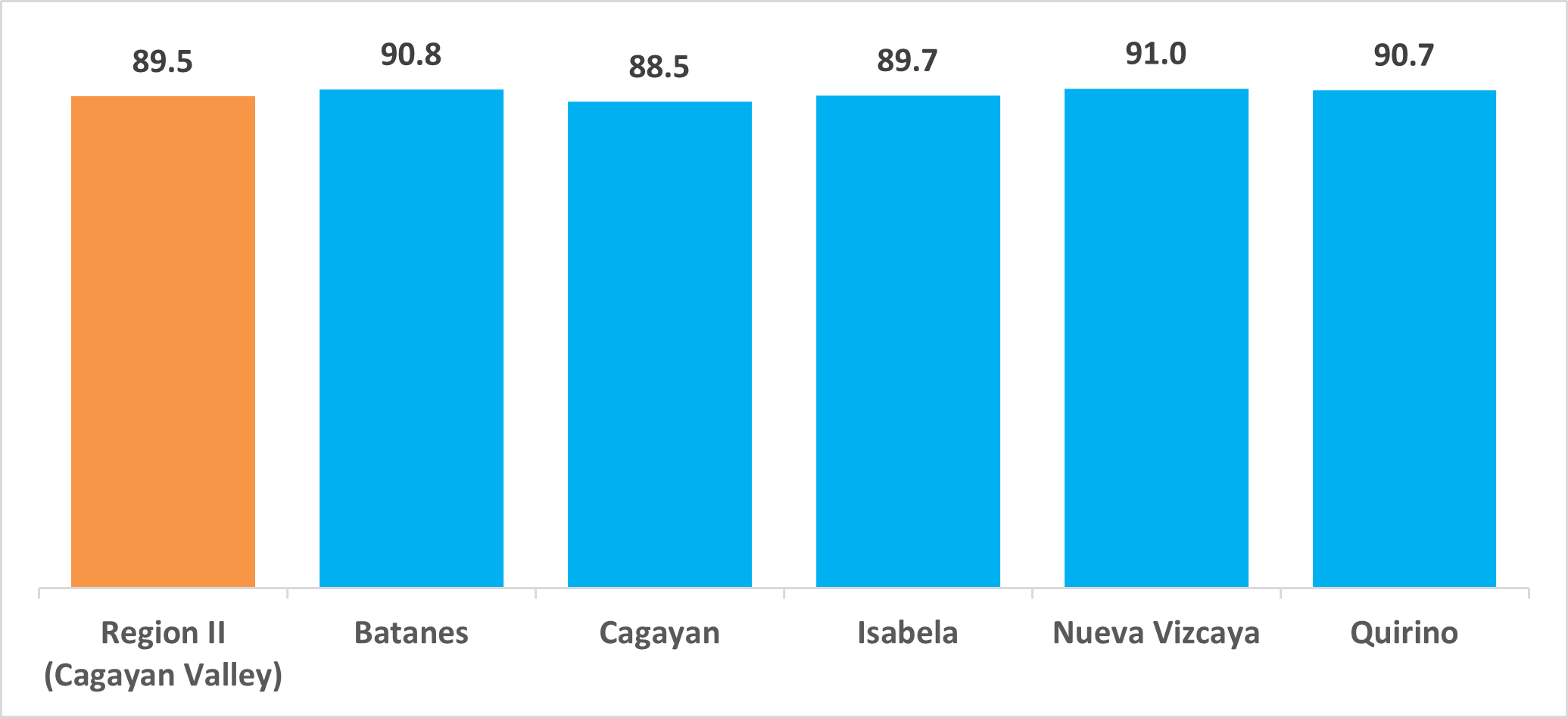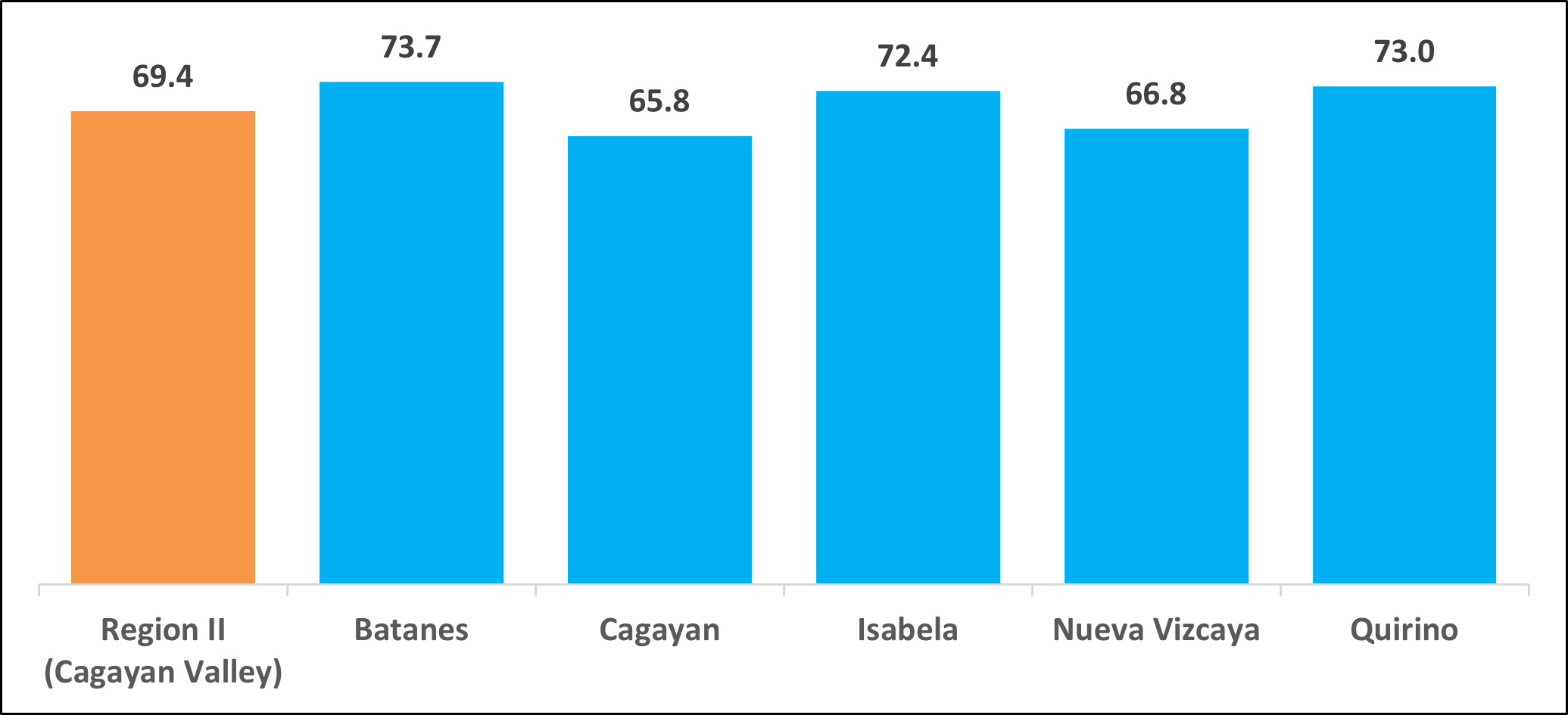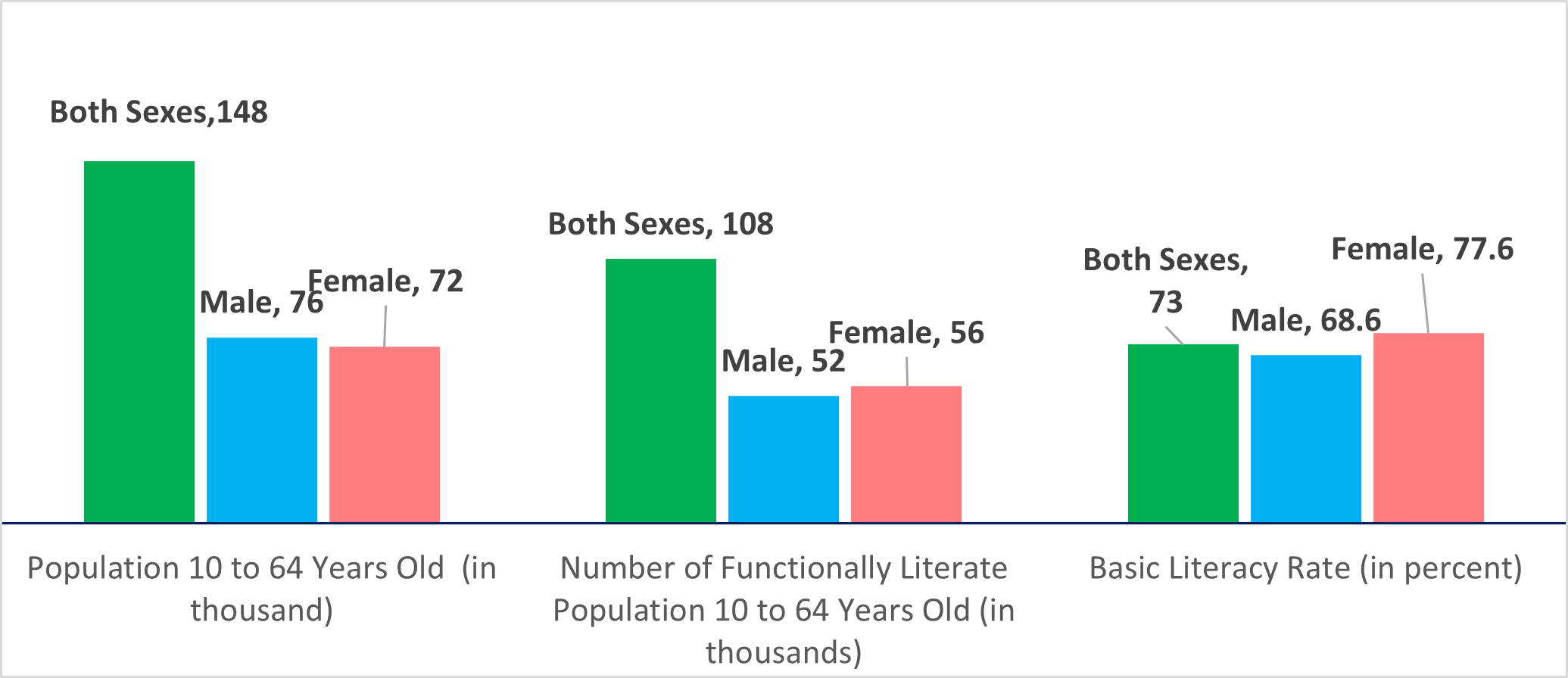SPECIAL RELEASE
The Functional Literacy, Education and Mass Media Survey (FLEMMS) is a nationwide household-based survey conducted by the Philippine Statistics Authority (PSA) every 5 to 6 years. It provides comprehensive data on the literacy levels, educational attainment, and mass media exposure of Filipinos aged 10 to 64 years old, with some indicators covering individuals aged 5 and over.
Basic literacy is the ability of a person to read and write a simple message in any language or dialect with understanding, and to compute or perform basic mathematical operations.
9 out of 10 Filipinos in the region and in Quirino Province aged 5 years and over are basically literate or one who can read and write a simple message in any language or dialect with understanding, and to compute or perform basic mathematical operations.
Figure 1. Basic Literacy Rate of Population 5 Years Old and Over by Province,
Region 2: 2024 (in percent)

Figure 1, presents the scores of Region II (Cagayan Valley) and its provinces—Batanes, Cagayan, Isabela, Nueva Vizcaya, and Quirino. Region II as a whole has an average score of 89.5. Among the provinces, Nueva Vizcaya has the highest score at
91.0, followed by Batanes at 90.8, Quirino at 90.7, and Isabela at 89.7. Cagayan has the lowest score among the provinces, with 88.5. Overall, most provinces scored higher than the regional average.
Figure 2. Number and Rate of Basically Literate Population 5 Years Old and Over by Sex, Quirino: 2024

Figure 3. Levels of Literacy for Population 5 Years Old and Over by Sex,
Quirino: 2024 (in percent)

In Figure 2 and 3, the basic literacy status of the population aged 5 years old and over. Out of a total population of 183,000 individuals in this age group, 89,000 are males and 93,000 are females. Among them, 166,000 individuals are considered basically
literate, comprising 83,000 males and 82,000 females. Despite males having a slightly higher number of literate individuals, females demonstrate a higher basic literacy rate. The overall basic literacy rate stands at 90.7%, with females recording a rate of 91.8% and males at 89.6%. This indicates that while the literacy count is nearly equal between sexes, a greater proportion of females are literate compared to males.Functional literacy is the ability of a person to read, write, compute and comprehend. In addition to the basic literacy skills, functional literacy includes higher levels of comprehension skills, such as integrating two or more pieces of information and making inferences based on the given information.
7 out of 10 Filipinos in the region and in Quirino Province aged 10 to 64 years are functionally literate or one who can read, write, compute, and comprehend.
Figure 4. Functional Literacy Rate of Population 10 to 64 Years Old by Province,
Region 2: 2024 (in percent)

Figure 4, shows the data for Region II (Cagayan Valley) and its provinces in terms of a specific indicator, with Region II recording an overall value of 69.4. Among the provinces, Batanes has the highest value at 73.7, followed by Quirino at 73.0, Isabela at 72.4, Nueva Vizcaya at 66.8, and Cagayan with the lowest at 65.8. This indicates that most provinces have values higher than the regional average, with only Cagayan and Nueva Vizcaya falling below it.
Figure 5. Number and Rate of Functionally Literate Population 10 to 64 Years Old by Sex, Quirino: 2024

Figure 5, presents data on the literacy status of the population aged 10 to 64 years old, categorized by sex. The total population in this age group is 148 thousand, with males accounting for 76 thousand and females for 72 thousand—indicating a nearly even distribution. When it comes to functional literacy, 108 thousand individuals are considered functionally literate, with females (56 thousand) slightly outnumbering males (52 thousand), despite having a smaller overall population. This trend is further emphasized in the basic literacy rate, where females exhibit a significantly higher literacy rate of 77.6% compared to 68.6% for males. The overall basic literacy rate for both sexes stand at 73%. These figures highlight that females not only match but exceed males in literacy achievements, suggesting a need for focused efforts to improve literacy rates among the male population in this age group.
Figure 6. Levels of Literacy for Population 10 to 64 Years Old by Sex, Quirino:2024 (in percent)

Figure 6, compares basic literacy and functional literacy among individuals, segmented by sex (male, female, and both sexes). Basic literacy—defined as the ability to read, write with understanding, and perform basic computation shows high rates across the board: 93.7% for both sexes, 92.5% for males, and 94.9% for females. This indicates that most of the population possesses foundational literacy skills. However, when looking at functional literacy which includes reading, writing, computing, and comprehension the percentages drop significantly to 73% for both sexes, 68.6% for males, and 77.6% for females. Notably, females again outperform males, with a 9% higher rate in functional literacy. While basic literacy rates are relatively even and high, the disparity in functional literacy suggests that comprehension and more advanced cognitive skills may be lacking, particularly among males, highlighting a critical area for educational focus.
Despite a commendable basic literacy rate, the 2024 FLEMMS results expose a significant gap in functional literacy with nearly 30% of the population lacking the comprehension skills necessary for daily life. The shift to a more stringent definition underscores the need for deep, systemic education reform. This outcome serves as a wake-up call: ensuring actual understanding not just the ability to read and write must become the core benchmark of literacy initiatives.
ENGR. CHERRY GRACE D. AGUSTIN
Chief Statistical Specialist
Cgda/jbg
